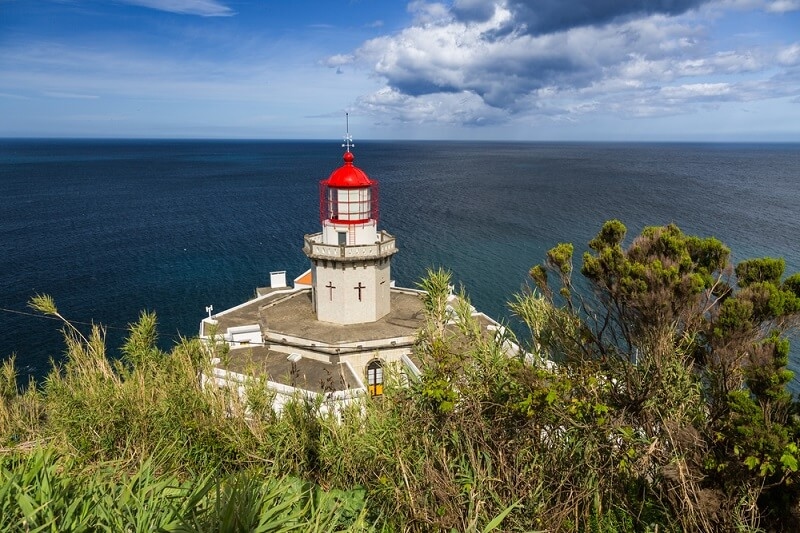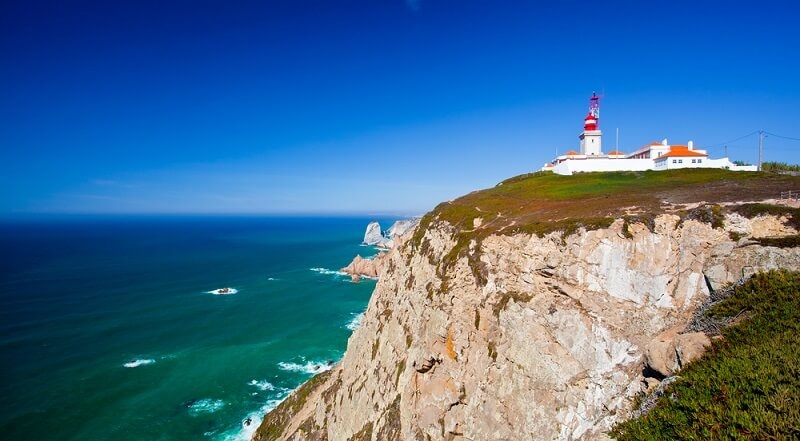
Portugal's lighthouses function as more than directional landmarks; they are long-lived monuments to Portugal's maritime identity, historical seafaring past, and stunning coastline. These familiar, recognizable icons sit on rocky cliffs and sandy beaches, combined with architectural grace, historical significance, and picturesque Portuguese oceanic landscapes. From the Portuguese historic lighthouses to the iconic towers looking over the Algarve, they are long-lived tales of discovery, protection, and heritage. It is a fitting tribute for tourists fascinated with the coastal landmarks of genuine Portugal. Checking out lighthouses will provide a history lesson to travelers, and rather than a postcard photograph, they can frame a picture that captures a unique effort and dramatic vistas. Whether touring Algarve lighthouses in person or utilizing an all-encompassing Portugal lighthouse guide, the tour radiates cultural richness and natural beauty.
Portuguese lighthouses began during the Age of Discovery, when Portuguese explorers began sailing across unknown oceans. With salty, wide-open seas and rocky cliffs, the towers became vital to helping bring sailors home safely. They retain a strong association with Portugal's seafaring past.
Most historic lighthouses, like Cabo da Roca or São Vicente, were usually constructed at key locations that struck a compromise between architectural utility and aesthetic beauty. They became sentinels of the Atlantic, contributing to Portugal's role as a world maritime power. For tourists, being at the foot of these lighthouses is akin to entering a living timeline where the sound of the ocean mixes with centuries of human determination.
Portugal and historic lighthouses tend to be situated on rugged cliffs, with panoramic ocean vistas. Every one of them has its own story:
Everything about visiting these towers unites Portugal's identity with the natural drama of its seacoast.
When most travelers think of the Algarve, they think of many restaurants and golden beaches of the towns on the cliff edges. However, Algarve lighthouse tours are no less satisfying. These tours showcase southern Portugal's lighthouses that once protected the country's busiest commercial routes.
Led tours of Algarve lighthouses also enable visitors to listen to lesser-known stories, ranging from legendary lighthouse keepers to tales of shipwrecks, enhancing the cultural understanding of these legendary structures.
Portugal's maritime past cannot be separated from its lighthouses. Throughout the 15th and 16th centuries, while explorers such as Vasco da Gama and Prince Henry the Navigator opened up trade routes worldwide, navigational facilities were in greater demand. Portugal's lighthouses became an unavoidable means of ensuring voyages.
Historic buildings like Farol de São Julião da Barra protected Lisbon's entrances, and others along the coast provided the secure passage of merchant vessels and naval ships. Travelers today can visit Portugal's historic lighthouses to connect with that golden age of discovery. Each is a reminder of the country's contribution to world navigation and commerce.

To make your trip easier, here's a Portugal lighthouse guide to the top coastal Portugal sights:
This lighthouse guide to Portugal enables tourists to combine scenic charm with learning about history, resulting in a fulfilling and memorable travel experience.
Though beaches are of primary interest for most tourists, coastal Portugal landmarks like lighthouses offer a similarly engaging experience. Their striking presence along the cliffs shows Portugal's connection to the sea.
Lighthouses like the Farol da Nazaré, located overlooking such a popular big-wave surf spot, engage both the drama of the location and the historical connection of maritime tradition. Farol do Cabo Espichel is close to the famous dinosaur footprint cliffs, a fantastic balance of natural history and cultural heritage.
Seeing these coastal Portugal destinations ensures that travelers get to visit a more authentic version of the country, where Portugal's ocean views converge with centuries-old history.
The biggest draws to visiting Portugal's lighthouses are, without a doubt, the Portuguese ocean views. Few places compare from the rugged coastline of the north to the calm beaches of the south.
The blending of Portugal's historic lighthouses with the deceptively beautiful ocean views offers guests a unique experience that is both culturally and visually festive.
Today, Portugal's historic lighthouses are maintained not just for their function as tools for navigation, but also for their cultural significance. Most of the lighthouses are open to the public and have small museums that contain exhibits on Portugal's maritime history. Restoration protects these coastal landmarks for generations to come. For travelers, promoting lighthouse tourism in conjunction with preservation efforts makes visiting, from Algarve lighthouse tours to historic towers in the North. This visit counts as keeping these iconic structures alive.
Here are some practical recommendations when visiting lighthouses in Portugal:
Following a well-structured Portugal lighthouse guide, tourists can get the best out of their seaside endeavors.
Portugal's lighthouses are more than just coastal attractions—they are living reminders of Portugal's maritime history, cultural identity, and beautiful natural scenery. Whether you are at the stunning historic lighthouses, taking in the beautiful ocean views, or taking Algarve lighthouse tours, each experience is a little bit about discovery, achievement, and wonder.
When visitors work with a Portugal lighthouse guide, they can experience these timeless structures, continue to safeguard the seas, and leave us curious about the mysteries within. Standing in front of one of these towers, with the Atlantic before you, it is easy to understand why Portugal's lighthouses are treasured icons of strength, history, and beauty.
This content was created by AI